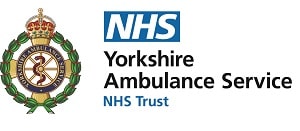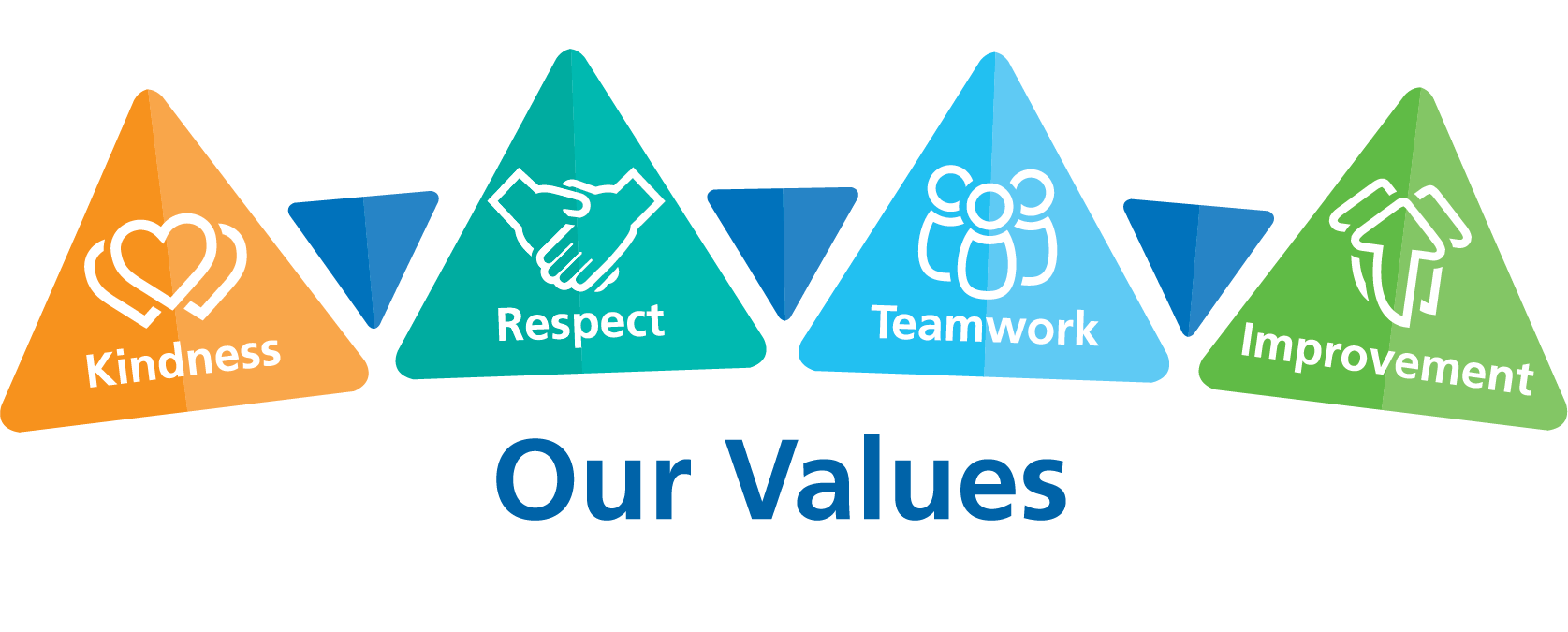Clinical Apprenticeships
Our clinical apprenticeships
We offer an amazing opportunity to start your clinical career with Yorkshire Ambulance Service through our ambulance support worker apprenticeship. This is an advanced or Level 3 apprenticeship and a first step to becoming an ambulance support worker - and sets you on the pathway to becoming a paramedic.
As an ambulance support worker, you will respond to 999 emergency calls and transport patients to and from specified treatment centres and other locations, which may be very remote settings. You will drive safely using blue lights and sirens claiming relevant exemptions from road traffic law as appropriate.
You will assist in the assessment and management of a range of medical and trauma patients working alongside clinical staff to handle and transport patients or direct patients to alternative care pathways.
You’ll work as part of a double manned ambulance crew, alongside a more senior member of staff such as a paramedic or associate ambulance practitioner
You’ll be required to work in a range of settings and environments, including, in some cases, uncontrollable environments assisting individuals at the scene.
Your clinical duties will vary. Often, you’ll support and assist the senior clinician and, in cases where patients deteriorate, you’ll provide the basic level of life-saving techniques.
This minimum 12-month apprenticeship will provide training and clinical supervision, six weeks classroom training and four weeks blue light driving training and an operational support to ensure you acquire the necessary knowledge and skills safely with all the support mechanisms that are on offer to all staff.
The clinical career pathway at a glance for people who join us as an ambulance support worker
Entry level pathway
Ambulance Support Worker (ASW) Apprentice - 13-month training programme (including six weeks of clinical classroom training and four weeks driver training). Upon completion, move into an Associate Ambulance Practitioner (AAP) role.
Associate Ambulance Practitioner (AAP) - Gain experience in the AAP role before applying to the next step of the career path, known as 'Pathway to Paramedic'. Or remain in the AAP role providing vital, clinical support on a frontline ambulance
Pathway to Paramedic
Associate Ambulance Practitioner (AAP) Apprentice - 15-month training programme (including 12 weeks of clinical classroom training).
Associate Ambulance Practitioner (AAP) - Gain experience in the AAP role before applying to the next step of the career path, known as 'Pathway to Paramedic.' Or remain in the AAP role providing vital, clinical support on a frontline ambulance.
Paramedic Apprentice - Two-year training programme, attending university whilst working on a frontline ambulance.
Newly Qualified Paramedic (NQP) - Work as a Newly Qualified Paramedic for two years, completing the required training and activities to become a fully-fledged Paramedic.
Post-registration pathway
Paramedic - Work as a Paramedic, delivering vital care to patients across Yorkshire. There are also a range of roles available within YAS to put your skills and qualifications to different areas of practice, or progress onto an Enhanced Clinical Practitioner apprenticeship.
Enhanced Clinical Practitioner (ECP) Apprentice - 12-18 month training programme attending university whilst working in a Specialist Paramedic training role. Chose specific pathways to specialise in urgent care, critical care or mental health.
Specialist Paramedic - Work as a Specialist Paramedic providing care to patients in a range of settings, including rapid response vehicles and the Emergency Operations Centre. Future progression includes Advanced and Consultant Paramedic Roles.
The career path can be joined at various points depending on your level of prior qualification and experience.
We launched a new Enhanced Clinical Practitioner apprenticeship with Sheffield Hallam University in October 2024 with learners now working towards becoming specialist paramedics in mental health, critical care and urgent care.
The Level 7 apprenticeship - equivalent to a master's degree - provides paramedics with the opportunity to gain a postgraduate qualification while working in a clinical setting.
Some of our apprentice stories
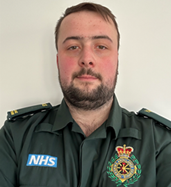
Dan Imeson, Ambulance Practitioner, completed Level 3 Ambulance Support Worker and Level 4 Associate Ambulance Practitioner apprenticeships before enrolling on a Paramedic Degree Apprenticeship Level 6 at the University of Huddersfield.
“The apprenticeship career path best suited my learning style as it was more practical based than purely academic study, although there is an element of academia. The way the learning is delivered fits perfectly around home/family life (a rarity with two small ones running around) and gives you plenty of 'on the job' exposure and learning opportunities."
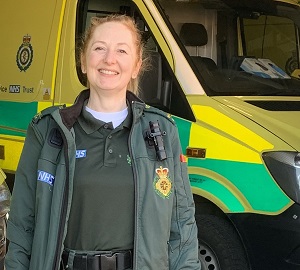
Former veterinary nurse Rachael Palmer joined us in 2018 and was one of the first people to do the Ambulance Support Worker apprenticeship at the Trust.
Emergency Care Assistant Rachael said: “It worked really well for me. I am a mum but managed to find the time to study and carry out the knowledge tasks which are assessed as part of the apprenticeship. I did the studying in my own time or if I managed to find time while I was on the station.
“I have had really good support and worked with loads of people at different stations and they have all been great. Learning on the job from skilled and experienced clinicians has been great."
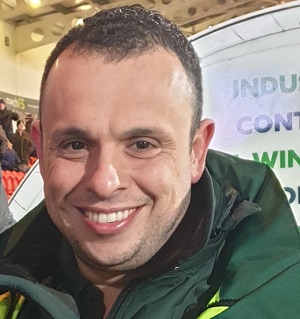
Jamie Goulding joined us in 2018 after working for a private ambulance service for around six years. As soon as he heard about the apprenticeship opportunity and the career pathway from Emergency Care Assistant to Paramedic, he was keen to get involved.
“I didn’t know initially what the 13-month apprenticeship entailed but I knew I wanted to work towards being a Paramedic – it’s something I have always wanted to do.”
Jamie, who is married with a family, said he found the balance of work and study worked well for him and would recommend the apprenticeship to others who aspire to become a paramedic.
The keen football fan is now also part of our events team, which provide medical cover for sporting events and festivals. This gave him the chance to meet his sporting hero, ex England international and Arsenal defender Sol Campbell, while he was covering a Doncaster Rovers game.
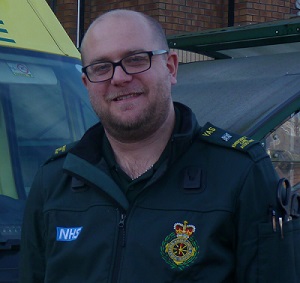
Ashley Bates remembers wanting to be a paramedic as a child and in 2019 he joined Yorkshire Ambulance Service and started to make his dream a reality.
He said: “I was glancing through the jobs and I saw the Emergency Care Assistant role. I thought if I do not try for it I will be really annoyed. I was part of the first group to do the apprenticeship. You do need to dedicate yourself to it but if you follow a structure you can’t go wrong. I am dedicated to being a paramedic. Don’t join if you want a 9 to 5 job but I absolutely love it – it’s a way of life.”
The next step for Ashley and others on the paramedic career pathway is the Associate Ambulance Practitioner apprenticeship.
Lauren Horsman, an Emergency Medical Technician 1 (EMT 1) at YAS, reflects on her place on the Apprentice Ambulance Practitioner (AAP) course.
"I started my career in the ambulance service in 2011 as an Apprentice on the Patient Transport Service (PTS) when I was 19. I had no experience with dealing with patients prior to this as I had come from college after completing a Level 3 Diploma in Health and Social Care. The apprenticeship with PTS gave me a lot of experience with patients such as communication, driving and also experience in the highs and lows of people’s lives. I thoroughly enjoyed my year long apprenticeship with PTS and was successful in gaining a full-time role, progressing from Band 2 to Band 3. The apprenticeship helped me with my job role, enabling me to learn a wide range of different skills within the ambulance service and I knew that this was the right career path for me.
"After another year’s experience on PTS, the opportunity came for me to apply for the Emergency Care Assistant role. This role seemed quite scary at first as although I had gained a bit of experience in emergency situations in my role on PTS, I knew it would be slightly different. I gained further responsibility, trained to drive on Blue Lights and gained more knowledge on emergency situations. This training provided me with everything I needed to complete my job role to the best of my ability.
"I was an ECA for four years and then finally felt confident to progress to the role as an EMT 1. This role gave me further responsibilities, for example, I could give more medications than I could as an ECA. This only solidified my desire to progress and eventually become a paramedic.
"After three years as an EMT 1, the role of Associate Ambulance Practitioner (AAP) came out. This is a further 13-month apprenticeship to which I am currently halfway through the clinical course for. It is a progressive role to eventually become a paramedic which will then involve me attending university for two years to become a qualified paramedic.
"I feel that the apprenticeships route and gradually working my way up through the ambulance service has helped hugely with my confidence in the emergency setting. I have learned a wide range of knowledge and skills which are invaluable. Something as small as being able to communicate with someone not in my age bracket (being 19 and speaking to a 90-year-old) has helped me become the person I am today.
"Apprenticeships are hard work but also highly enjoyable. I get to meet people from different areas of YAS and learn different things from tutors who have been around for a much longer time than I have. They have a wide range of knowledge which is being passed down to myself and others. Eventually, I hope to be able to pass down my knowledge gained through my experiences to others".
Experiences of students
Here are comments from some of the students who have graduated from paramedic apprenticeship courses at the University of Huddersfield and Teesside University.
“Lifelong learning might just sound like a buzz-phrase to some, but to me it has given me an opportunity to undertake an apprenticeship to achieve my goal of becoming a paramedic. I firmly believe that the apprenticeship route gives us a grounding based on practical abilities, and builds on that, creating the underpinning knowledge to graduate as a degree apprentice paramedic.” Steve
“The apprenticeship has made me a better clinician by enabling me to gain experience on the road as an autonomous practitioner whilst gaining more skills and knowledge at university.” Laura
“It taught me an awareness of my own decision-making and internal thought processes.” Rob
“I'm really enjoying the Paramedic Apprenticeship programme. It's filling in a lot of blanks - I'm learning about why we do things the way we do which is really helpful in understanding the big picture. The course is great and the staff at Huddersfield are very knowledgeable, dedicated and supportive - we couldn't ask for better. It's a big step for all of us but with the online learning resources and guidance available we're well set up.” Anonymous
“As I’m starting out on a new phase of my career with YAS as a Degree Apprentice Paramedic, I’ve been given an opportunity to reflect on where we are at. This is a new route to becoming a paramedic and we are among the first to have this development opportunity. The gateway to this was the AAP programme and experience. Apprenticeships themselves are a well established way of passing on skills and knowledge. I started my working life as an apprentice and have confidence in the tried and tested partnership basis of them. These are strange times but the team at the universities are doing an amazing job of adapting the delivery of lectures to keep the programme running on schedule. Nearly a month in and I’m really enjoying the experience of learning new skills and enhancing my practice as a clinician. It is demanding but also very rewarding.” Steve
“I have been working for YAS for many years now and have worked my way up through the ranks. I am excited to finally be a student paramedic and I am honoured to be on the first cohort on the paramedic apprentice programme. I'm looking forward to grabbing this opportunity with both hands.” Karen
“Gaining a place on the first degree apprenticeship paramedic course at the University of Huddersfield is truly exciting and nerve racking at the same time. The urge to learn and continually develop to further the patient experience along with my own knowledge and skills feels very rewarding and something I will enjoy. I'm very new to academia and hopefully I will learn to enjoy this too with the help and support of the great tutors and staff we have met during the first few weeks of our apprenticeship at Huddersfield." Sarah
Entry requirements for Ambulance Support Worker apprenticeship
You will need to be 18 years of age or over.
You will usually need three GCSEs at grade 4 (grade C) or above including Maths and English Language or functional skills including English and Maths at academic Level 2
Full UK driving licence (with no more than three penalty points)
Support can be offered to obtain a category C1 licence throughout the application stage.
You will require enhanced DBS (Disclosure Barring Service) clearance - vulnerable groups of people need to be protected and DBS checks assist in ensuring that the most suitable people are appointed to roles working with these vulnerable groups.
More information
Visit: You can find out more at the Institute for Apprenticeships and Technical Education.
Next steps:
Look to see if there are any current apprenticeship vacancies on our vacancies page.
If you have any further questions please email yas.apprenticeships@nhs.net
